Best 3 Wheel Motorcycles
Updated on | By Mohit Chauhan
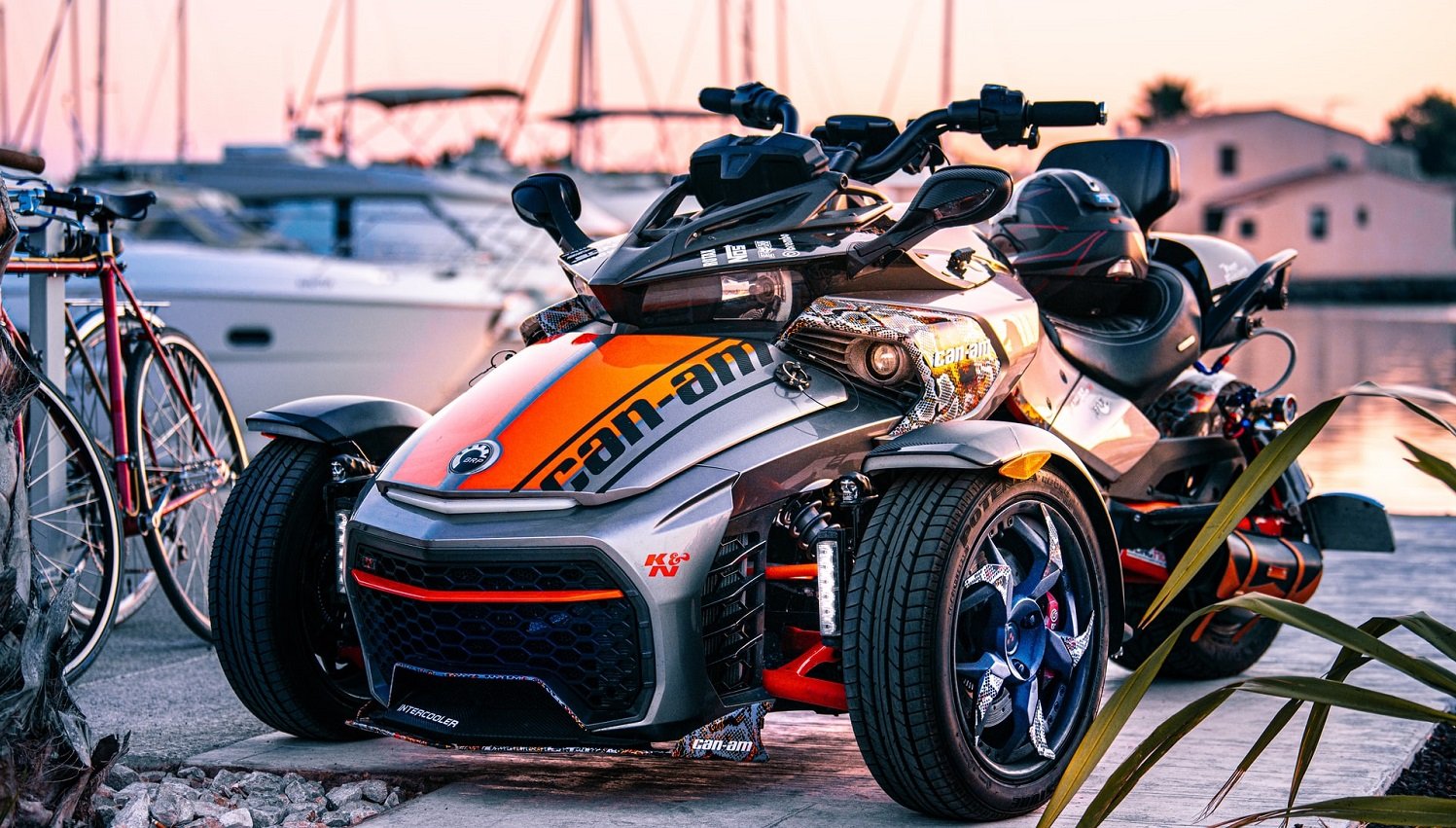
Time and again, the motorcycling industry comes up with new and fascinating developments that offer motorcyclists a completely unique riding experience. In today’s editorial article, we are going to look at some of these recent developments.
To some extent, you might say that we are looking at a motorcycle. But on second thoughts, its features are more than those of two wheels; with a foot brake pedal, a parking brake, a luggage compartment and an automatic transmission.
These classic three wheeled motorcycles may seem strange to a seasoned motorcyclist, and especially to younger generations, but do you know who likes them? Everybody else! So, shouldn’t we be happy that there are more motorcyclists out there no matter how many wheels they have on their bikes?
Let us take a look at some of the best three-wheel motorcycles that are currently available in the market.
Best 3-Wheel Motorcycles
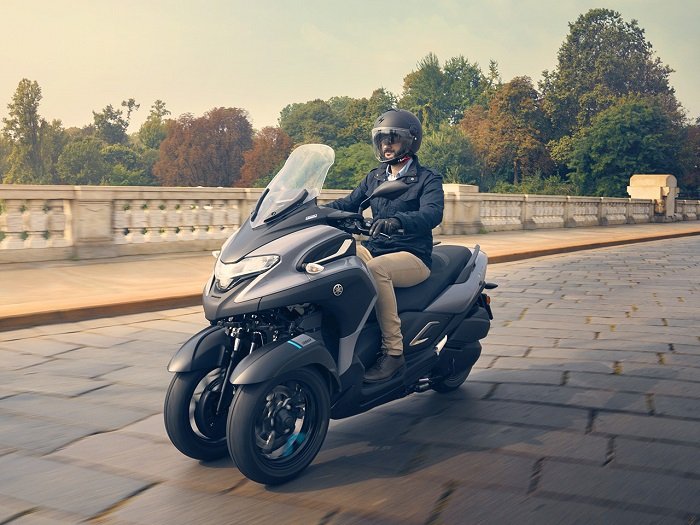
Yamaha Tricity 300
Introducing the Tricity 300, the third trike from Yamaha. To do so, the Japanese combined their three-wheeler concept from the 125cc Tricity scooter with the spectacular three-wheeled Niken motorcycle. This created a really imposing vehicle with a massive front fairing that makes its presence felt quite aggressively.
With the new Yamaha Tricity 300, the manufacturer aims at providing an attractive alternative to the car. An advanced engine, exemplary cornering performance, and plenty of comfort. With a displacement of 292 cubic centimeters, this liquid-cooled single-cylinder is one of the most cutting-edge assemblies in the segment with a single-piece forged crankshaft and a semi-dry sump lubrication system (Wet Sump). As a result, the Tricity delivers an impressive 28 HP (27.6 HP @ 7,250 RPM) and 29 NM’s of torque (@ 5,750 RPM) at its disposal, both of which can easily withstand the weight of 239 kilograms (Kerb weight). That said, the Tricity 300 is not a speed king, rather, it is a delight to ride on with its steady performance that accelerates to a maximum of 130 km/h.
The sense of driving instills confidence as soon as you set it off. Yet, despite the overall weight, the Tricity leaves no impression of inflexibility. It is comfortable and precise in following the set course and does not deviate from it even when the terrain is bumpy.
To top it all, the 14-inch wheels ensure a lot of driving stability and excellent riding comfort.
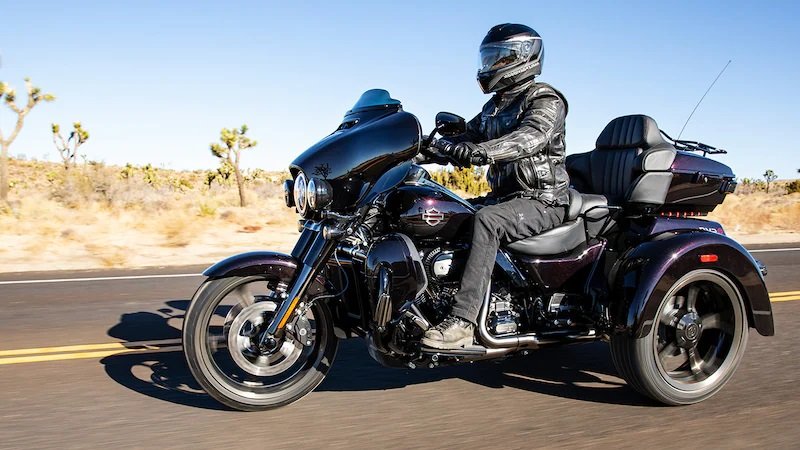
Harley Davidson CVO Tri Glide
The most expensive motorcycle currently produced by Harley-Davidson comes in three wheels. So, technically speaking, it’s not a motorcycle at all, but a trike. In other words, it’s a motorcycle for all those out there who cannot or do not want to ride a standard two-wheeler.
In contrast to the rest of the line-up, CVO’s are characterized by the use of special polychromatic paintwork, as well as technical refinements and features that may find their way into the mass production models. For instance, a cornering lamp integrated into the headlamp.
The CVOs are equipped with the most powerful engine the Americans have to offer. The latest version comes with a displacement of 1917cc Twin-Cooled™ Milwaukee-Eight® 117 with four-valve engine.
The Electronic Sequential Port Fuel Injection (ESPFI), high-performance camshaft, and Screamin’-Eagle air filter together produce more than 100 Horsepower and, depending on the model, around 170 NM of torque.
In terms of quality, design, and engine characteristics, the Harley-Davidson Tri-Glide has set a new benchmark. It is a delight to see that the engine is both powerful and extremely smooth to ride, despite being on the heavier side. The features of this three-wheeler offers everything that a motorcyclist’s heart desires.

Yamaha Niken GT
To begin with, you get some standard components on the Niken. The heart of the machine is the cross-plane three-cylinder engine we already know from the Yamaha MT-09. This delivers an enormous 115 horsepower and 87.5 NM of torque.
An obvious advantage of two front wheels is more grip. With two front wheels, the contact surface is doubled, thus doubling the traction. In other words, the Niken can perform exceptionally well in unfavorable conditions such as rain or loose gravel surface.
In fact, it won’t slip at all, unless you are planning to overtake around the corners with too much aggression. Its twin 120mm front tires effortlessly allow 45-degree lean angles, something that even more conservative or even beginner riders can do.
But what is the most exciting part of riding?
Cornering on a motorcycle! On the Niken, this can be practically mastered with the footrests keeping a check on the lean angle.
What’s more? On this three-wheeler, even an inexperienced rider can cruise around the mountain pass of Grossglockner (listed among the best motorcycle routes in the world) without being constantly overtaken by others, thanks to the 847cc three-cylinder engine inherited from the MT-09, which is capable of outperforming at any revs.

Yamaha Tricity 125
Tricity’s aesthetics are probably the first thing that will grab your attention. Gazes from pedestrians are guaranteed, and even other motorcyclists will be intrigued by this unconventional trike.
Powered by a 125cc single-cylinder engine, the Tricity outputs a maximum of 12 horses at 7,500 RPM and a torque of 11.7 NMs at 7,250 RPM.
However, with a top speed of around 94 km/h, one won’t be able to do much on country roads or highways. But if you live in the suburbs and have to commute to cities, Tricity is a good choice, provided the journey isn’t too long.
While the two wheels up front may make you think that Tricity is wider, in reality, it’s no bigger than a conventional motorcycle with fairings. So, riding through congestion won’t pose a problem, and the extra stability will keep it from tipping over.
In addition, the recent model of Tricity has been redesigned, most notably to improve the suspension and brakes. There is now a standard dual-circuit ABS system that keeps the Tricity stable even during extreme deceleration. At the rear, a slightly smaller but wider wheel is mounted to increase the under-seat storage capacity. Furthermore, you now get a retrofitted LED headlight as a standard which further makes the ride more pleasant for the rider.
All in all, if we compare the features and handling of any three wheeled motorcycle versus the Tricity (in the 125cc displacement range), the later will surely come out as a winner!
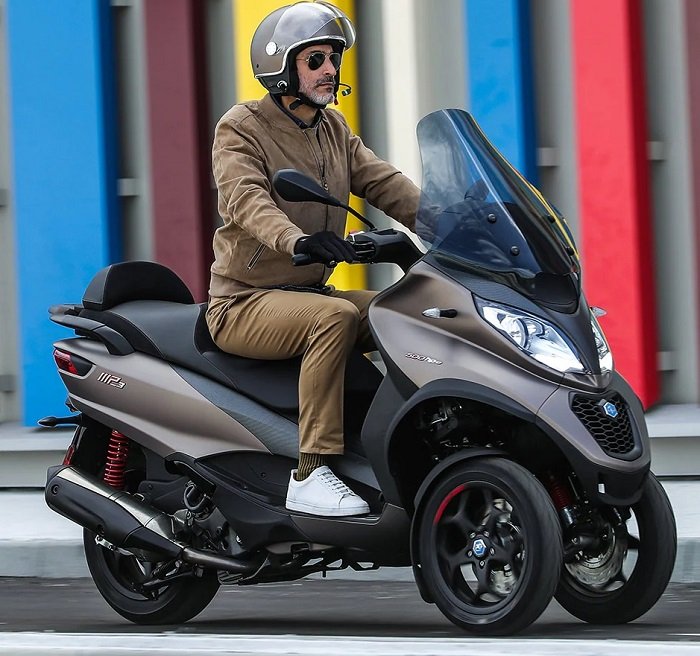
Piaggio MP3 500 HPE
Unlike a motorcyclist, a car driver is accustomed with a reverse gear. But now, the MP3 500 has something like this in its Sport Advanced version, making it the first three-wheeled motorcycle with a reverse gear. And just like its peers, it can be driven with a car driver’s license!
The 500 has a four-valve engine and was originally developed as a Euro 2 engine. It has been significantly redesigned and is now called HPE (“High Performance Engine”). This HPE engine now offers higher performance thanks to less internal friction and other modifications.
The new improved single cylinder engine now outputs a maximum of 42 horses @ 7,750 RPM and 47.5 NM of max torque @ 5,750 RPM. This makes it ideal for touring and for two-up riding.
When you first ride around the new MP3, you will be delighted by the solid construction and elegant finish. Its large seat, which has been tailored perfectly to accommodate both rider and passenger, is divided into two sections, making it a luxury-class sedan on three wheels. And without a lot of fiddling around, two full-sized motorcycle helmets can be easily stowed in the seat compartment.
Supported by a telescopic damper, the saddle can even be unlocked in three ways, either using the multi-functional key fob, through a push button located on the dashboard, or mechanically using the ignition key.

Can-Am Spyder F3
Even though the Can-Am has been in the market for a while now, it still manages to garner looks of amazement and admiration. And while some consider this three-wheeler a snowmobile on wheels, others see it as a motorcycle sporting two front wheels.
The Can-Am derives power from its three-cylinder in-line Rotax® engine with a displacement of 1330cc, thereby producing an enormous 115 horses of max power and 130 NM of max torque. Moreover, the engine is paired with a semi-automatic 6-speed transmission.
With a dry weight of around 408 kilograms, one horsepower is required to move around 3.7 kilograms. As a comparison, this is less than the power to weight ratio of Porsche 911, where the ratio is well over four kilograms per single horsepower.
Working on the front axle are big-bore shock absorbers from SACHS with adjustable pre-damping.
Other noteworthy features include a redesigned windshield that comes in various sizes, an adjustable passenger seat that can be upgraded with a backrest, and heated handlebar grips on the premium version.
A four-speaker audio system with 80 watts of power is also provided onboard. And with two new side cases, the luggage capacity is now around 78 liters, which is not much, but still enough for long tours. And that’s not all, thanks to the 27-liter fuel capacity, the Spyder can go over 400 kilometers with a full tank!
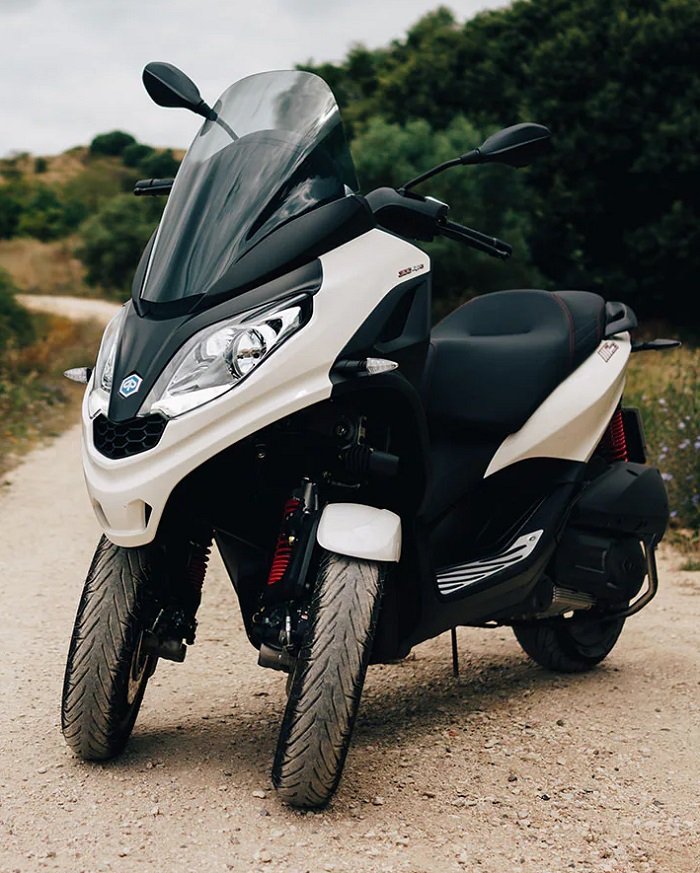
Piaggio MP3 300 HPE
The latest addition to the MP3 family is the 300 HPE, weighing in at 225 kilograms.
And even in this model, Piaggio has not skimped on the essentials that are needed while commuting to work. You get a USB socket in the small storage compartment above the dashboard, an informative LCD panel including a handlebar mounted remote control, easy-to-read instrument clusters, and plenty of storage space below the seat, positioned comfortably at a moderate height.
The performance of this 26 HP, 278 cc single-cylinder engine is sufficient for anyone looking for a daily commuter with three wheels.
There is another advantage for those who like to wear expensive boots: The thumb-operated lock ensures that your MP3 300 stays upright even at traffic lights without touching the road surface. Upon accelerating, however, the lock is released automatically in order to resume with your journey.
And if you engage both lock as well as parking brake, the trike can be parked without pulling the side stand.
All in all, the MP3 300 is a complete package; With fuel consumption of just 3-4 liters per 100 kilometers, it is reasonably economical, comfortable, and above all, reliable to ride. In addition, it’s fun to ride, as you can still grin under your helmet despite the intense look of your three-wheeler.
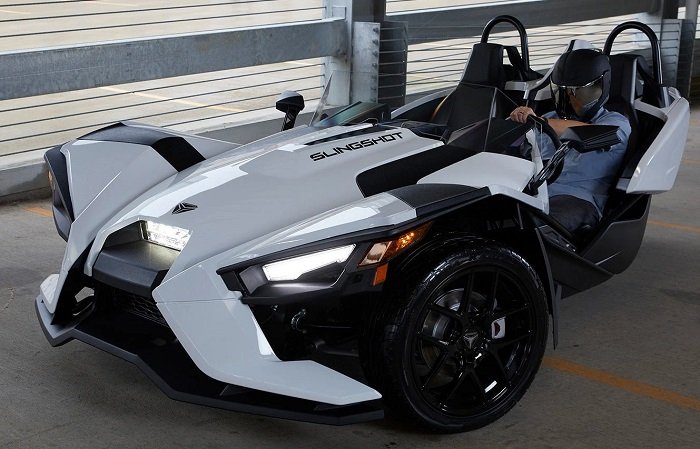
Polaris Slingshot S
The U.S. company Polaris has been offering the Slingshot for quite a while now, which can be driven either like a car or a three-wheeler by enthusiasts and adventure lovers. In America however, the Slingshot is considered a motorcycle and has already found around 30,000 customers so far.
In terms of design, the Slingshot S combines the characteristics of a car and a motorcycle. The chassis is made of a simple tubular steel frame, just like a motorcycle. A 1997cc Prostar 2.0L 4 Cylinder engine and two-wheel suspensions are mounted at the front, while the motorcycle-styled swingarm with toothed belt drive and the striking 255mm wide, 20-inch wheel are mounted at the rear.
Nestled in between is the passenger compartment with two seats and two cupholders between them. You also get two storage compartments as well as a glove box and a simple cockpit in front.
Speaking of the driver’s seat, it is fortunately more comfortable than the sleek design would suggest at first glance. Thanks to the adjustability of the seat and steering wheel, the ideal riding position can be determined in no time.
The interior, made entirely of plastics, is simple, modern and functional. And because the Slingshot doesn’t have a roof, everything is fully waterproof. There are drainage holes on the floor as well to prevent the interior from turning into a pool.
Featuring its angular plastic body parts, the three-wheeled motorcycle looks as if it has stepped out of a science fiction film. Its four headlights on the x-shaped front cast a ferocious look. A certain resemblance to the KTM X-Bow cannot be denied here!

Peugeot Metropolis 400
The conceptually wider front with two wheels has never looked so harmonious on any other three-wheeled motorcycle! The designers have smartly adapted the styling elements of their in-house production cars, which you will notice on many occasions, especially around the front and rear lights.
Not only that, but the easy-to-read dashboard with its two round gauges and large 5-inch TFT color screen in the center also bear a striking resemblance to the Peugeot four wheelers with the lion on top.
By no means are three-wheeled motorcycles designed to be lightweight. The chassis with complex suspension technology on the front axle and the correspondingly massive frame put up a lot of weight. In this respect, the Metropolis 400 is no exception.
However, its Kerb weight of 258 kilograms does not hinder its performance in any way. While driving on actual road, the Metropolis pulls away from a standstill and proves to be an extremely responsive, nimble and lively companion and ensures a smooth ride.
The 399cc single-cylinder engine, which is now called LFE (Low Friction Engine), has been optimized in terms of friction and thus performs very swiftly. Its 36 Horses of power delivered at 7,250 RPM and 38.1 NM of torque delivered at 5,750 RPM ensures that you leave the traffic in no time.
All in all, Peugeot’s revamped Metropolis 400 three-wheeled vehicle bridges the gap between the car and the motorcycle with advanced swing-arm kinematics, top of the line specifications, and a host of driver assist features.
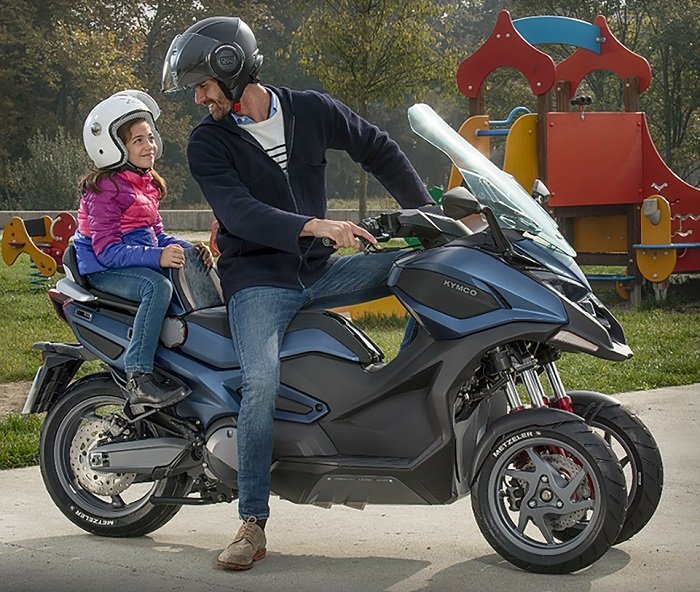
Kymco CV3
After series of press releases and announcements, the Taiwanese manufacturer has finally unveiled its production version of three wheeled motor scooter and has positioned itself against Piaggio, Peugeot, and Yamaha.
Just like Piaggio MP3 and Peugeot Metropolis, the CV3 also utilizes a front axle with two closely spaced wheels, which, however, are guided by a parallel-link suspension and double USD forks.
Its two-cylinder engine displacing 550 cubic centimeters outputs a decent 52 horse power, which places the CV3 at the top of the segment in terms of performance. Moreover, the liquid-cooled fuel-injected engine is not part of a swing-arm drive unit, but is instead concealed under the seat. The rear wheel is guided by a twin-sided suspension, just like a conventional motorcycle, and the power is transmitted to the rear wheel via a toothed belt.
Although a fairly similar design is used by Yamaha on their three-wheeled Niken motorcycle, the 13-inch wheels mounted on the CV3 are directed from the inside. This sophisticated leaning mechanism allows the CV3 to bear similar handling characteristics and still allow a lot of lean angles around the corners.

Quadro QV3
So, the Swiss brand Quadro founded by former Piaggio employees came up with an idea of defying the laws of physics with a three-wheeled scooter/motorcycle. In fact, the width of the Quadro QV3’s two-wheeled front axle and a foot brake pedal on the right makes it legally a multi-track vehicle.
Weighing 220 kilograms, the new QV3 is a lightweight three-wheel motorcycle. As a result, it manages a power-to-weight ratio of around 7.6 kg per single horsepower. And because of its low weight and low center of gravity, it is exceptionally easy to maneuver as well. Out front, the vehicle comes with 14-inch wheels and out back with 15-inch wheels.
Powered by a single-cylinder engine that uses four-valve technology and conforms to Euro4 standards, the 350cc displacement provides a powerful torque and a top speed of 125 km/h (a total of 29 HP is available at 7,000 RPM).
The integrated AWBS (All Wheel Braking System) features three brake discs, all of which can be operated simultaneously via the adjustable brake levers on the handlebars or with the foot brake.
Speaking of safety; The front two-wheeled axle has an unusually firm grip on the road and moves almost imperturbably through tight curves or around corners. This means that unpredictable bumps or potholes will hardly pose a problem. And thanks to the hydraulics, it’s even possible to drive over a curb at a very sharp angle, because the suspension compensates for the different heights of the front tires in the process.
Bottom Line
For many people, a two-wheeler is the number one means of transportation. Be it for commuting to work, college, school or even for leisure, it’s the only way to get around.
However, a motorcycle is not something that everyone is confident enough to ride. For those who like the feeling of wind blowing on their face, yet are either afraid to ride a two-wheeler or are not allowed to do so due to lack of driver’s license, there are trikes for them. In fact, it is a lot more practical option for beginners.
Besides, the three wheels add an extra plus in the safety.
That’s all for now, ride safe!




